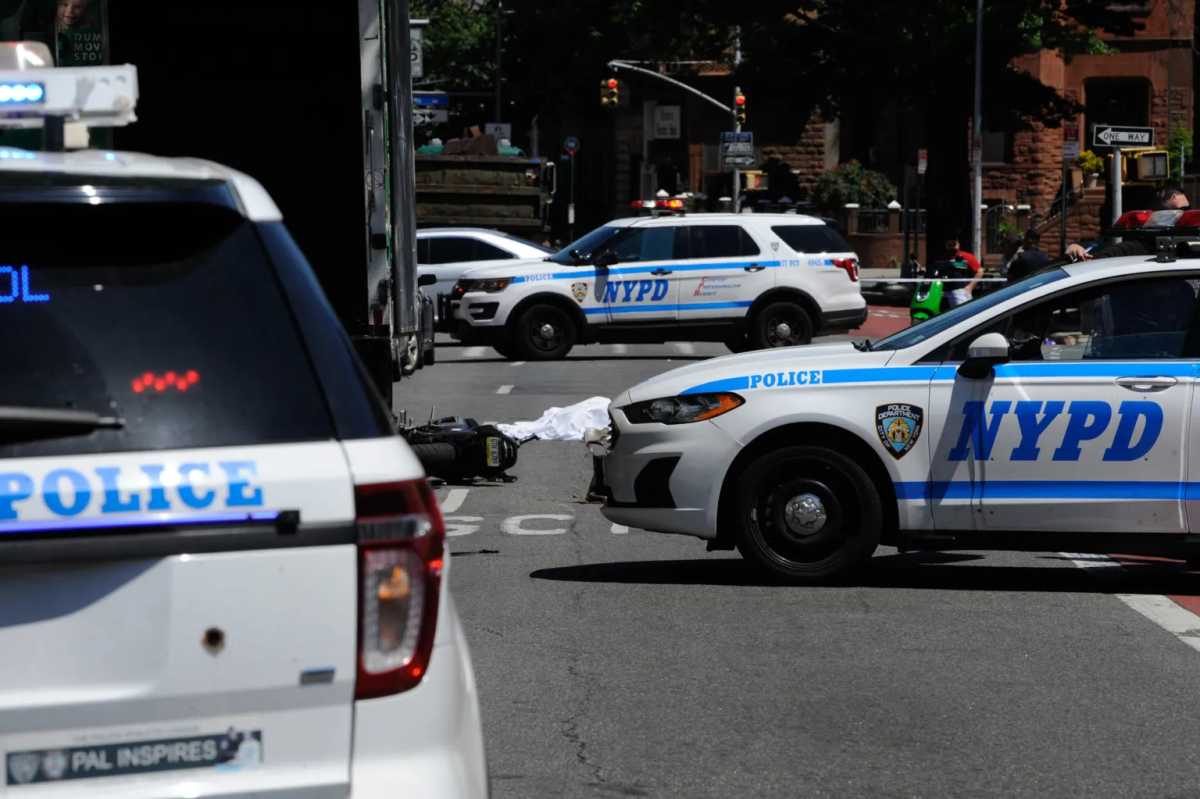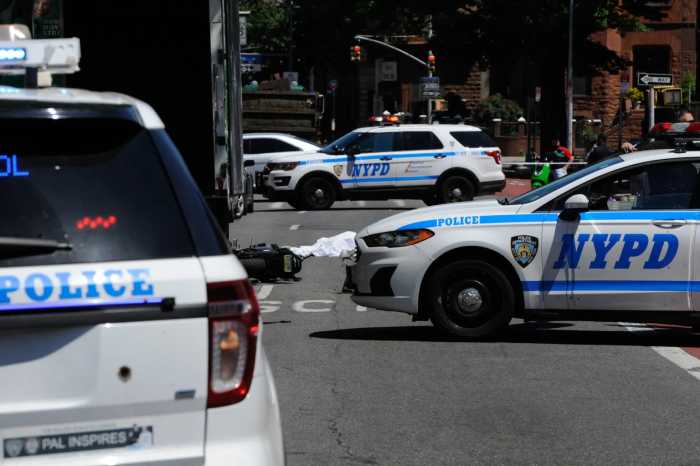
BY LINCOLN ANDERSON | Like so many Downtowners, a Tribeca-based architect is tired of the endless schemes for renovating and redeveloping Pier 40 that never seem to pan out. But now, with media titan Barry Diller poised to spend around one-quarter billion dollars to create a totally new pier at W. 13th St., Michael Sorkin has an alternative idea: Put Diller’s “entertainment fantasy island” on the existing Pier 40, at W. Houston St., and use Diller’s cash to fix it up.
Sorkin’s recently unveiled plan — by his Terreform firm — basically preserves Pier 40’s existing “doughnut”-shaped three-story pier shed and massive artificial-turf courtyard playing field, while adding in elements of Diller’s Pier55 plan, such as a huge 4,700-seat outdoor amphitheater and a “lushly landscaped roof” and possible rooftop sculpture garden, plus other features not in Diller’s scheme, such as a large outdoor public swimming pool.
There would also be another, smaller, outdoor amphitheater of 500 seats. As if that isn’t enough, there would be five more indoor theaters on the pier’s mezzanine and ground levels, ranging in size from 160 to 250 seats.
“The premise is that not just some of things but all of the things from the Pier55 plan could migrate to Pier 40,” Sorkin said.
The Hudson River Park Trust — the park’s governing state-city authority — is already getting $100 million from the St. John’s Partners developers for their purchase of 200,000 square feet of the pier’s development rights. Sorkin said the $250 million Diller in funding that Diller has committed, if shifted to Pier 40, would ensure that not only the sprawling pier’s corroded support piles are all repaired, but that the pier won’t need additional new commercial activity to help fund the rest of the 5-mile-long park — and could probably even shed its long-standing parking operation.
“The predicate here is that parking on the water is a completely inappropriate use for a site as valuable and charismatic at Pier 40,” the architect declared.
Even without a massive commercial redevelopment plan, the pier could still have some revenue potential, Sorkin assured.
“There could be some revenue from the shows,” he said. “We proposed a small hotel — a 100-room boutique hotel — restaurants and a marina.
“I think there has been so much pressure on Pier 40,” he said, “that people have thought about the highest revenue-generating use rather than the highest public use.”

Sorkin said his plan includes community-facility spaces that could be programmed for whatever locals want — and he said it’s clear that the neighborhood wants even more youth sports uses on the pier.
“Kids’ recreation — slam dunk,” he said.
“I would like to see a small school there of some sort,” he added. “Keep the soccer fields, boating — plus art stuff from Pier55. A fish restaurant over the water — why don’t we have any of those in Manhattan?”
It’s not the first time Terreform has taken a crack at a design for the unsolvable “Rubik’s Cube” of a pier.
“This is the fourth Pier 40 project we’ve done in the 25 years,” he said.
But there’s one big “if” here — would Diller even want to shift his funds from a dazzling “Diller Island” to Pier 40, where he would have to share the pier with tykes playing T-ball and soccer?

“I have sufficient faith in Barry Diller’s civic-mindedness that this would appeal to him,” Sorkin assured, adding, “We look forward to the handshake between Barry Diller, Douglas Durst, Bill de Blasio and Andrew Cuomo that seals this win-win deal!”
The Trust and plaintiffs from The City Club of New York are currently in negotiations about Pier55. The plaintiffs — whose lawsuits were funded by Durst — scored a major victory a few months ago when a federal judge threw out the Corps of Engineers’ permit for the project, ruling it was not “water-dependent” — meaning Pier55 doesn’t need to be sited on a brand-new pier.
A spokesperson said the Trust is not commenting on Sorkin’s plan.
Tobi Bergman, chairperson of the Community Board 2 Future of Pier 40 Working Group, said, “If the sponsors want to do it at Pier 40 and if the Trust can live with reduced income, then it sounds great. But those are two big ‘ifs.’ ”



































